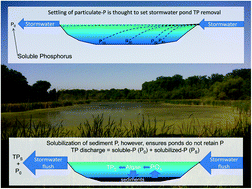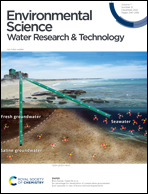Phosphorus solubilization in stormwater ponds: rapid field assessment to identify ponds with excessive total phosphorus concentrations
Abstract
Wet stormwater ponds are sedimentation basins used for phosphorus (P) removal in urban watersheds. The ponds are ubiquitous, reaching densities of 1–4/km2 in northern tier urban areas of the USA. Per US EPA Nationwide Urban Runoff Program (NURP) criteria, phosphorus removal in stormwater ponds depends on sedimentation and permanent sequestration of particulate P. However, settling of particulate P does not determine stormwater pond performance. Rather, solubilization of sediment P is the decisive determinant of performance. A study of 72 stormwater ponds in the western suburbs of Minneapolis, Minnesota USA revealed that a substantial fraction of particulate P solubilizes because of sediment anoxia induced by thermal stratification. Only 26% of ponds could be viewed as compliant to NURP performance criteria (median TP ≤150 μg L−1), 21% partially compliant (median TP 150 to 280 μg L−1), and 52% as uncompliant (median TP 290 to 2500 μg L−1). Because of the large number of wet stormwater ponds, determination of NURP compliance by direct sampling is largely impractical. A rapid assessment protocol (RAP) was developed to predict non-compliance with NURP performance criteria using field observations on ponds sampled for phosphorus at least 48 hours after the last significant precipitation event. Weight of field parameters to predict dead pool TP was determined with a random forest algorithm, which is an elementary machine learning tool. RAP score ranges were determined to have significant (Wilcoxon-Mann–Whitney, p < 0.05) differences in median TP ranges. The most highly weighted parameter predicting dead pool high TP values was the presence of emergent macrophytes in ponds. Further development of the RAP protocol may help stormwater utilities set management priorities.



 Please wait while we load your content...
Please wait while we load your content...